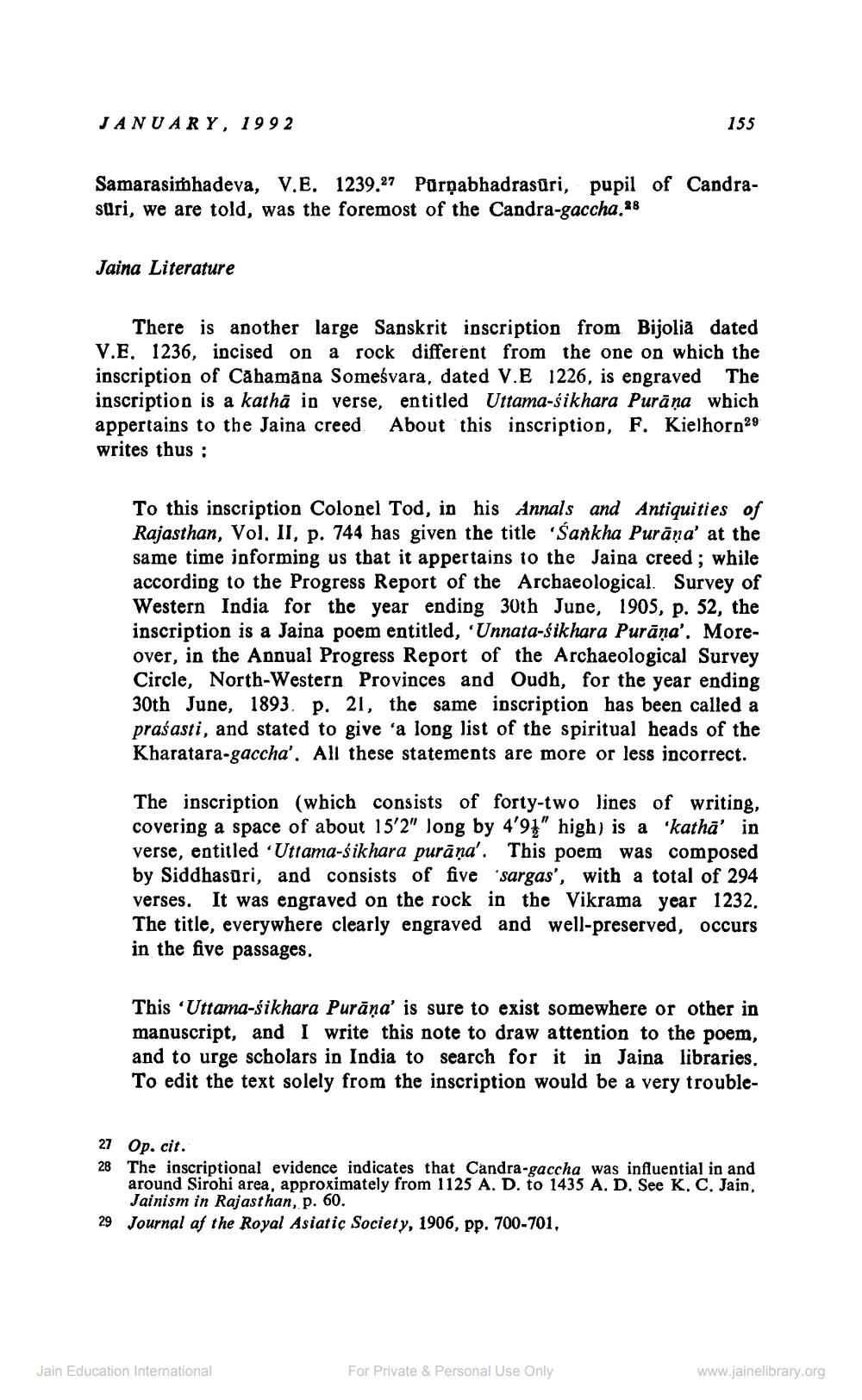________________
JANUARY, 1992
155
Samarasimhadeva, V.E. 1239.27 Purpabhadrasuri, pupil of Candrasuri, we are told, was the foremost of the Candra-gaccha.48
Jaina Literature
There is another large Sanskrit inscription from Bijolia dated V.E. 123, incised on a rock different from the one on which the inscription of Cahamāna Someśvara, dated V.E 1226, is engraved The inscription is a katha in verse, entitled Uttama-śikhara Purāna which appertains to the Jaina creed About this inscription, F. Kielhorn29 writes thus :
To this inscription Colonel Tod, in his Annals and Antiquities of Rajasthan, Vol. II, p. 744 has given the title 'Sankha Purāna' at the same time informing us that it appertains to the Jaina creed; while according to the Progress Report of the Archaeological Survey of Western India for the year ending 30th June, 1905, p. 52, the inscription is a Jaina poem entitled, 'Unnata-śikhara Purāņa'. Moreover, in the Annual Progress Report of the Archaeological Survey Circle, North-Western Provinces and Oudh, for the year ending 30th June, 1893. p. 21, the same inscription has been called a prasasti, and stated to give 'a long list of the spiritual heads of the Kharatara-gaccha'. All these statements are more or less incorrect.
The inscription (which consists of forty-two lines of writing, covering a space of about 15'2" Jong by 4'91" high) is a 'kathā' in verse, entitled 'Uttama-śikhara purāņa'. This poem was composed by Siddhasūri, and consists of five 'sargas', with a total of 294 verses. It was engraved on the rock in the Vikrama year 1232. The title, everywhere clearly engraved and well-preserved, occurs in the five passages.
This 'Uttama-śikhara Purāņa' is sure to exist somewhere or other in manuscript, and I write this note to draw attention to the poem, and to urge scholars in India to search for it in Jaina libraries. To edit the text solely from the inscription would be a very trouble
27 Op. cit. 28 The inscriptional evidence indicates that Candra-gaccha was influential in and
around Sirohi area, approximately from 1125 A. D. to 1435 A. D. See K. C. Jain,
Jainism in Rajasthan, p. 60. 29 Journal af the Royal Asiatic Society, 1906, pp. 700-701,
Jain Education International
For Private & Personal Use Only
www.jainelibrary.org




